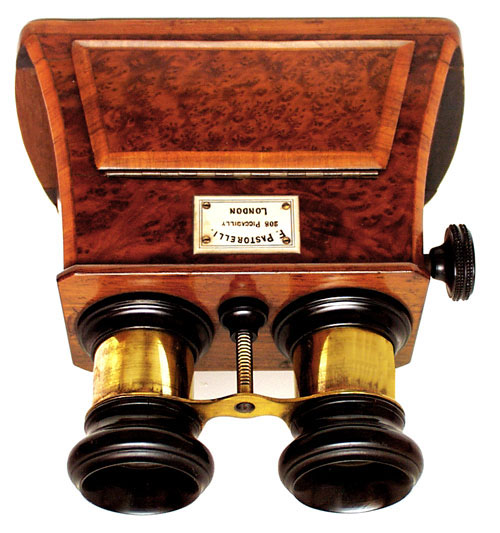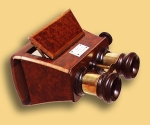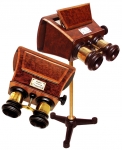Photography Objects > Stereoscopy
A 19th Century Brewster Stereoscope By F. Pastorelli.
Item#: CPS845
SOLD
This instrument is a trapezoidal-shaped box with curved edges made from exotic burl walnut with reddish brown birds-eye pattern with an ivory maker’s plaque. In front, two converging lens eyepieces adjusted for focal length with rack and pinion mechanism. The whole supported on a brass-telescoping pillar with black painted tripod feet. On the opposite side of the lenses, two lateral openings for the insertion of stereoscopic pictures on cardboard or tissue and a sheet of frosted glass to diffuse the light through the tissue picture. On top, a hinged mirrored door that acts to reflect light for frontal illumination of cardboard pictures. Internally, the box is darkened and is divided into two parts with a centre partition that prevents each eye from perceiving the image of the other. Sir David Brewster (1781-1868) was a Scottish physicist who invented the kaleidoscope and this reflected light lens stereoscope. He also discovered the polarization phenomenon of reflected light. His book (The Stereoscope, its history, theory and construction) is still a good introduction to stereoscopy. Francis Pastorelli was a prolific scientific instrument maker working in London from 1849 to 1880 and at 208 Piccadilly from 1856 to1878. His expensive stick and aneroid barometers are sought after for their highest quality of inlaying decorative exotic woods. Provenance: Optical Antique Collection of the Nosch Family (Founder: Isidor Nosch - Optic 1861, Freiburg).
Related Items
-
 Price: $100.00
Price: $100.00 -
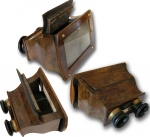 Price: $500.00
Price: $500.00 -
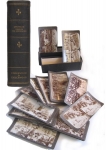 Price: $350.00
Price: $350.00
Development: Epoch | Design: Luch
Copyright © 1999-2024 Gilai Collectibles. All Rights Reserved




